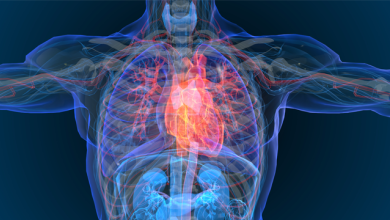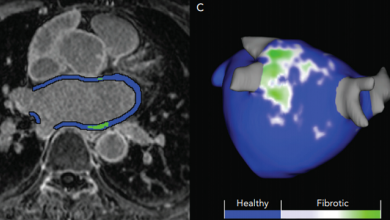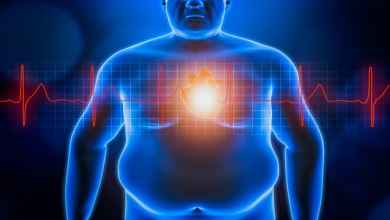Search results
Author(s):
Nikolaos Fragakis
,
Gabriele Vicedomini
,
Carlo Pappone
Added:
3 years ago
Although atrial fibrillation (AF) is considered the most common arrhythmia in clinical practice, its prevalence is relatively low in the young and middle-aged, ranging from 0.5 % in men below 40 years to 1 % by 60 years.1,2 Regular exercise is proposed as a powerful tool for the primary and secondary prevention of cardiovascular disease, reducing most of the risk factors that predispose to AF,…
View more
Author(s):
Demosthenes G Katritsis
,
Bernard J Gersh
,
A John Camm
Added:
3 years ago
Sudden cardiac death (SCD) is usually defined as death due to cardiac causes occurring within 1 hour of the onset of symptoms. Unexplained sudden death occurring in an individual older than 1 year of age is known as 'sudden unexplained death syndrome'. Unexplained sudden death occurring in an individual younger than 1 year of age is known as 'sudden unexplained death in infancy'. SCD with…
View more
Author(s):
Fatima M Ezzeddine
,
Isaac G Leon
,
Yong-Mei Cha
Added:
8 months ago
CMR and AF Management
Author(s):
Yan Zhao
,
Lilas Dagher
,
Chao Huang
,
et al
Added:
3 years ago
Article
Unmasking Adenosine
Author(s):
Gareth DK Matthews
,
Andrew Grace
Added:
3 years ago
Article
Author(s):
Mark Young Lee
,
Srinath Chilakamarri Yeshwant
,
Sreedivya Chava
,
et al
Added:
3 years ago
Aortic stenosis (AS) is the most common valvular heart disease in industrialised countries with a prevalence of about 5 % in the general population aged greater than 75 years. During the past decade, transcatheter aortic valve replacement (TAVR) has emerged as a valuable, minimally invasive treatment option for patients presenting with symptomatic severe AS, who due to their advanced age and…
View more
Author(s):
Cristina E Molina
,
Jordi Heijman
,
Dobromir Dobrev
Added:
3 years ago
Optimal cardiac function depends on appropriate rate and force of contraction, with specific cardiac regions having developed particular beat-to-beat properties depending on their individual functions. For example, isovolumetric contraction time is shorter in the right ventricle (RV) than in the left ventricle (LV). At the cellular level, cardiac function is regulated by regional cardiomyocyte…
View more
Author(s):
George Thomas
,
Jiwon Kim
,
Bruce B Lerman
Added:
3 years ago
CRT is an essential treatment for patients with heart failure and reduced ejection fraction as it can restore left ventricular (LV) electrical and mechanical synchrony. It has been shown to increase quality of life, improve functional status, reduce hospitalisation, improve LV systolic function and reduce mortality in properly selected patients.1,2 While CRT is an effective therapy, approximately…
View more
Mark Josephson: Pioneer, Educator and Mentor to a Generation of Cardiac Electrophysiologists
Author(s):
William G Stevenson
Added:
3 years ago
Article
Author(s):
George D Katritsis
,
Demosthenes G Katritsis
Added:
3 years ago
Implantable cardiac devices, such as pacemakers, are used to treat a number of heart conditions, especially those related to the electrical conduction system. Cardiac pacemakers are a well-established and effective therapy, and have been in use for more than 50 years.
The first pacemaker was implanted in a patient in October 1958 by Åke Senning in Stockholm, in cooperation with engineer Rune…
View more












 « First
« First